Why Michelia ALBA on the ground dosen't grow
Hi, all,
My M. ALBA has been in the ground almost 3 years. It JUST grows a little bit bigger compared with that when I put it into the ground three years ago. Now it is some 6' tall under the full sun.
I planted it with Mirocle/Gro potting soil.
Fertilize it regularly, once a wk with Miracle/Gro and Fish emulsion.
Water it regularly.
In first two summers, I gave it a filtered sun by installing a frame with black filter over it to get rid of strong Sol CA sun. However, this summer, I let it go with full sun ( I thought that the reason it don't grow may be due to lack of full sun). Now the tree leaves become yellowish and brown in the tip (or half of the leaves become brown.)
I doubt if the potting soil for the ground tree is right choice?
Anyone out there has the experience with this situation?
If I need to replace the soil and how and when can I do it?
Any advises would be very much appreciated.
Thanks in advance!
Wei
Comments (21)
wliu57
Original Author15 years agolast modified: 9 years agoThanks-Daxin!
I will dig it up and replant it in later fall. I will use Miracle/Grow soil for plants and shrubs.
It was planted a little bit deeper-maybe another reason of not growing. This time I will plant it higher.
I read a paper which said that two kind of people kill trees, those who don't care, and those who care TOO MUCH.
I am the second one.I have killed 6 M. ALBA already, from 3 ft to 8 ft, from potted ones to ground ones within 6-7 years. This is my LAST one (I told myself that and my family told me so too.)
That is why I am not confident to do anything with it.
Again, thanks a lot for your advice. I will keep you informed when I replant my LAST DEAR M ALBA.
I will make it!
Wei
wliu57
Original Author15 years agolast modified: 9 years agoHello, daxin,
My M. ALBA' leaves become browner and browner. So I can't wait until fall.
I replanted my M. ALBA today and found that the soil is very sandy without moisture. This confirms that the potting soil plus some sand doesn't work for M. ALBA. The tree needs moisture. I added lot of Miracle/Grow soil for tree & Shrubs.
I hope my M. ALBA will survive the transplant shock in the later summer (here CA still hot now).
Now I know how I killed my other 6 M. ALBA.
Wei
daxin
15 years agolast modified: 9 years agoIt seems like your watering practice needs to be more consistent. Most tropical plants benefit from regular irrigation. I put in a drip system this year with a battery powered valve made by DIG for a lot of my container plants. All of them are doing much much better than last year when I mostly watered by hand.
When the root ball is really dry, you need to soak it at least overnight to re-wet the soil. This is especially important for potting soil, as there is a large amount of peat moss in it. Peat moss is notorious for its tendency to stay dry after drying out completely. For container plants, you can sit the pot overnight in a saucer or bucket filled with water. For plants in ground, a soaker hose can be used to slowly irrigate and re-wet the soil.
Watering practice is the most critical aspect of growing plants. I think over or under watering account for the majority of plant death. It is just like humans, we can persist for a month without eating, but we will not last more than a week without drinking water. One invaluable tool is a soil moisture probe ($5 from Home Depot), which can be used to test soil moisture level regularly. This way you can water at the right moment for container plants and you can also adjust your irrigation system perfectly for plants that are in ground.
tropical_philippines
15 years agolast modified: 9 years agoHi Wei,
You have such a good fighting spirit, not having given up on Michelia Albas despite having killed already six. You are right, most of us plant lovers (which practically includes ALL MEMBERS of Gardenweb) kill our plants not from neglect but from too much care and attention (excessive watering and fertilization).
I used to have 7 michelia albas but killed one of them during transplant so I now have only 6 michelia albas left. (Photos here.) I learned lots of things since the death of my 5-ft tall michelia alba and have sinced experienced 'near death' for some of my remaining michelia albas. I learned from experience and now, although I'm still no expert on michelia alba care, I have made quite a number of generalizations about them and their care. Here are my 'learnings' which I have 'distilled' into five generalizations below:
1) Michelia albas even when already large and mature, can EASILY DIE if OVERWATERED. Overwatering is manifested by rapid yellowing and dropping of the leaves especially the lowermost, mature ones. If you see this 'symptom' of rapid yellowing and multiple leaves dropping in your michelia albas, you need to stop watering until the soil is almost dry and resume watering more lightly and less frequently until the yellowing and dropping of leaves stops.
2) Michelia albas even when already large and mature, can also EASILY DIE from UNDERWATERING. Underwatering is manifested by 'DROOPING' of leaves. The leaves are normally angled up. If the leaves are angled at 90 degrees or lower consistently (even at night), they are most likely dehydrated and in need of water. Unlike in overwatering, underwatered michelia alba usually have leaves that don't turn yellow and drop. Rather, they remain green but droop. If watered thoroughly and deeply, the drooping leaves can easily spring back up. If not watered, the leaves even droop further down and then start to dry up, shrivel, and then ultimately turn to brown. This is unlike in overwatering where the leaves usually remain firm and supple (not drooping) yet many of the healthy leaves seem to mysteriously turn yellow and drop overnight.
3) Michelia albas even when already large and mature, can also EASILY DIE from OVERFERTILIZATION. Overfertilization especially with chemical fertilizers can burn their fine feeder roots. Symptoms of overfertilization are clearly visible at the leaf tips. Most of the lower, more mature leaves slowly develop BROWNED or BURNED tips. With time, the browning of tips spreads to the lower portions of the leaf until half of the leaf is brown. By this time, remaining portions of the leaves are usually still green and the leaves usually still remain firm and not drooping. When the overfertilization is severe, the browning of leaf tips can include even the youngest leaves and buds. If this happens, DEATH is almost certain unless the plant is removed and replanted in new soil without fertilizer.
4) Michelia alba leaves CAN CHANGE COLOR. Under moderate shade, the leaves are MEDIUM TO DARK GREEN. As you expose them to more sun, the leaves gradually LIGHTEN in color from LIGHT GREEN to almost LIGHT YELLOWISH GREEN in FULL SUN. This is normal and should not cause worry. However, when the lightening of leaves is accompanied by burned and browned spots or patches at the center of the leaves (not at the tips), the leaves may be suffering from sunburn and hence, may benefit from a slightly more shady location. Generally, michelia albas can take full sun and bloom better in full sun so it would be best to place them under the maximum amount of light levels they can tolerate without burning their leaves. Drooping of leaves during the hottest parts of the day is normal and should be expected in full sun so long as they don't persist late in the afternoon or in the early evening. If they persist, you may consider checking if you have watered them deeply and sufficiently and if the plant is not suffering from dehydration or underwatering.
Light green or Yellowish green leaves with green veins is a symptom of chlorosis. Generally, in uncomplicated chlorosis, the leaves remain firm, angled up and supple and don't droop or turn yellow or brown or drop. Chlorosis is a symptom of iron deficiency and usually results from alkaline soil conditions. Most likely, the plant is planted near a concrete foundation or the soil is contaminated with some concrete materials or construction debris which are mostly alkaline due to the presence of cement. Conditioning the soil with acidic substances and ammending the soil with iron compounds may help but they should be done carefully as too much can do more harm than good.
5)Michelia albas even when already large and mature, can EASILY DIE from TRANSPLANT SHOCK. When transplanting, you should ensure MINIMAL ROOT DAMAGE. Take extreme care NOT TO DESTROY or cut off portions of the roots ESPECIALLY the finest root systems as it is where crucial nutrient and oxygen uptake takes place. Also, be sure to stake the newly transplanted plant and protect from strong winds. Strong winds can disturb the fragile root system and may severely slow down recovery of your plant. If you have a choice, it is better to locate the plant somewhere else where the roots will not be disturbed as Michelia albas have sensitive and delicate root systems.
Also, when transplanting, be sure to place the plant's root ball at exactly the same level or at a slightly higher level in the soil than it was originally. This ensures proper aeration of roots. Burying the roots too deep coupled with excessive watering can suffocate and rapidly rot the roots resulting in 'rapid' decline and death even if the plant is already mature. Death from root suffocation, extensive root damage or extensive root rot is manifested by rapid DROOPING OF ALL LEAVES followed by rapid drying, shrivelling, and dropping of leaves. I have experienced this with one of my michelia albas. The decline was so rapid and severe that from a completely healthy plant in the nursery, the plant rapidly regressed into nothing more than bare twigs with small leaves and buds at the tips in less than 3 week's time.
Hope this helps.
tropical
wliu57
Original Author15 years agolast modified: 9 years agoThank you very much for your kind info. I have printed it out for my textbook of M. ALBA planting.
I like your M. ALBAs.
I do have seen several M. ALBA here in southern CA but they are all much smaller than yours. Maybe it is due to the climate here (hot and dry in the long summer). I did see several huge M. ALBAs in the See World, Hong Kong 3 years ago.
I like the tree and the fragrance. I wonder if my tree could survive the transplanting. The temperature is keeping high in two wks and very dry after the transplanting. I can't mist it during the hot afternoon since I have to work.
If this one dies, I really don't know whether I have the courage to go for the EIGHT ONE.
Again, thank you very much-tropical.
I will keep you informed for my transplanted M. ALBA.daxin-I have the moisture probe for several years. I measure the moisture of the soil before I water them.
However, as long as the soil you used was wrong, no matter what you do, you get nothing. Now I won't use any potting mix for any ground trees. Thank you very much.Wei
cestrum
15 years agolast modified: 9 years agoTropical's advice is terrific, but I'd just like to mention two things that I do to my common Michelia champaca (one day I hope to get an alba too):
(1) Mulch well, keeping the mulch away from the trunk. I use sugarcane mulch because it's readily available here, but any mulch that decomposes quickly (not a hard mulch like woodchips that will take nitrogen from the soil) works well. Water before and after mulching or, even better, wait until a few rainy days are forecast and then mulch when the ground is wet and let the rain water it in further. The mulch will help keep the moisture levels more even and, when it rots down, will feed your plant naturally without any possibility of 'fertiliser burn'. Here, I mulch twice a year in the growing period, at the beginning of spring and the start of summer.(2) Use a liquid seaweed tonic (which is not a fertiliser) every fortnight. You can also spray it onto the foliage (just not in the heat of the day).
Oh, also, to help your plant acclimatise to a very sunny spot, you can spray it with one of those preparations that help stop it losing too much moisture from the leaves (also helps to protect against mild frost). Here it's called 'Stress Guard' but you'll probably have a local equivalent there. When you get around to transplanting your michelia, it would be a good idea to soak the rootball with the seaweed tonic, spray the leaves with your version of Stress Guard, then water the transplanted michelia in its new spot with more seaweed tonic. (Hope that makes sense!)
Good luck with your plant and, no, don't give up after 7 plants :-)
wliu57
Original Author15 years agolast modified: 9 years agoThanks a lot-cestrum,
I won't give up, never!
I told myself: You die, I buy, you die again, I buy again until I win the battle!Last Sunday I went to a nursery to buy my Fuji apple tree.
They have lots of M. ALBA to sell. They are all in 2 G pot, some 4' tall with large green leaves and some are blooming now with dreaming fragrance. They look so healthy and gorgeous. Guss what? I buy my 8th ONE... I was so happy when I drove home with my lovely M. ALBA and Fuji trees...
I will put it into ground next April-May (nursery experts suggestion).
First, I will just dig a 2 x roots ball wide and one and half roots ball deep hole for the tree. I used to dig a 3' wide and 2' deep hole. Too large hole was one of the causes to kill my M. ALBA.
Second, I will use commercial soil plus native soil in 1:1 ratio. I used to use ALL potting soil mix plus sand and perlite in order to get very good drainage for the tree. This kind mix will not hold the moisture needed for M. ALBA.
Third, yes, cerstrum, I will mulch it well and regularly.
Tropical: It seams no good news to tell about my new transplanted M. ALBA since we are having high temperature in last three wks. All I can do is cross my fingers...
Wei
cestrum
15 years agolast modified: 9 years agoEighth time is the lucky one :-)
You can also use seaweed solution on the one you've already transplanted (no. 7?), to help it get established in its new spot. It's the botanical equivalent of chicken soup!wliu57
Original Author15 years agolast modified: 9 years agocestrum, I regret that I just replanted my 7th M. ALBA in the same spot by adding one bag of commercial soil for trees & shrubs. I should have replanted it in another spot. I just did not realize that the too big hole for the tree is another "killer factor" for my six M. ALBAs.
I will see if I could replant it again in coming winter. Mostly I am going to loss this one...
What is the seaweed solution? Commercially available or made-it-by-yourself?
Thanks again!
Wei
daxin
15 years agolast modified: 9 years agoOne of the equivalents to Stress Guard in the U.S. is Cloud Cover. It is available from Home Depot and is a milky liquid that you can dilute and then spray on leaves and branches. I use it often in winter to protect against freezes. It will also help with reducing water evaporation during transplant. It will get washed off by rain eventually so there is no long term damage to the plants.
The size of a planting hole is not as critical as the drainage of the soil in the hole. If you have clay soil, you have to make sure that the root ball is on a mound so that excessive water can flow away. Another way to improve drainage is to use an auger to dig a deep 'chimney' at the bottom of your planting hole and back fill with free draining material such as perlite or lava rock. This way any extra water will flow down this chimney first and slowly drain away from there, while the root zone can avoid being saturated.
alba-mickey
15 years agolast modified: 9 years agoWei: Please don't give up on your 8 one of your Michelia Alba tree. No 8 in Chinese means "GOOD LUCK". I am sure you will make it. Good luck! I am living in San Francisco,Ca. I have a 19 year old Michelia Albatree growed in my backyard. It is about 25 feet tall. It bears about 2000 very fragant flowers every year. If you want to see the image of the tree, please email to me.
Mickeywliu57
Original Author15 years agolast modified: 9 years agoThanks-Mickey: I do want to see your pic. and i also want to know how wild you M. ALBA is. I want to plant my 8th one in the front yard closing to my house next spring. So I need to know how close it can be.
Again, thanks a lot!
Wei (wliu5711@yahoo.com)
Thanks-daxin: I am going to lose the 7th M. alba, since its leaves are liveless droping. I fell really sad...
Too much baby-sit kills my M ALBAs.
Wei
cestrum
15 years agolast modified: 9 years agoWei, I'm sorry to hear about no. 7, but it's not too late for the seaweed solution! I suppose if you live near a beach and it's legal, you could gather fresh seaweed and make your own 'tea' from it (Google should have info about how to do this). Here, I just buy mine ready-made. I've posted a link to the Australian product, but you must have a local equivalent in that great big country of yours. There's no need to get the Australian product in particular. Just ensure that the product is a tonic and not a fertiliser, because fertilising a sick plant could hasten its death.
Daxin's info about Cloud Cover sounds like it does the job of our StressGuard here. I like to keep some always at hand, along with the seaweed solution.
Here is a link that might be useful: Seasol website
wliu57
Original Author15 years agolast modified: 9 years agoThanks-daxin: I can't find Cloud Cover from local HD.
Hi-cestrum: Thank you for your advise. I got the dry seaweed from supermarket, soak them in the water for several hours, liquify them by blander. The problem is I don't know how much I should use it. I just use three TSP in about 500 ml water and spray it on the the leaves and the branches.I can spray twice a day in the morning and the evening.
Let's keep my figures across.
Weicestrum
15 years agolast modified: 9 years agoTwice a day seems a bit excessive; you might use it maybe twice a WEEK for the first week and then maybe weekly thereafter until the plant looks like it's recovering.
I've never made my own seaweed solution, so am not sure how strong it should be. As a rule of thumb, generally, you should use enough so that when mixed with water, the water looks like weak tea. But I think you need to do some Google research first because, as I said, I've never made it from scratch. (I also assumed it would be made from fresh seaweed--but once again I'm guessing.) So please do some research first.
If you can't find CloudCover, maybe you can find a similar product under a different brandname. Probably best to visit a nursery and ask staff there for help; they should be able to direct you to the right product. And maybe you could buy some commercial seaweed solution while you're there so that you have instructions to follow, and save your home-made seaweed when you've done some more research on how to make and apply it safely.
Mickey Kwok
11 years agolast modified: 9 years agoWei: For a long time that I had not post anything on the garden web, because I forgot my password as user alba-mickey. That is why I used another user name as Michelia-Mickey. Here is my giant Michelia Alba as tall as 25 feetand I had it planted on my backyard almost 30 years. Last year, I airlayered my michelia alba. Guess what on July 2012, I discovered that my airlayering michelia alba is rooting. How happy I am!!!!
phoebe368
10 years agolast modified: 9 years agoWow! Very cool! Thank you for sharing. I know a lot of the michelia albas sold locally are grown by air-layering so this is how they must do it.
James
5 years agoare the roots of this tree invasive? do they do damage? anyone have photos of the root system of these trees. Should they be planted far away from the house?

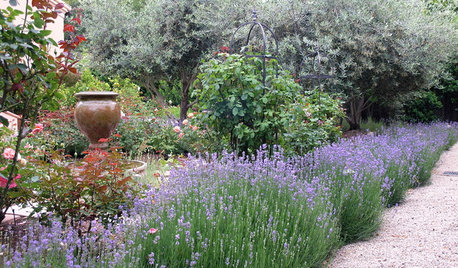


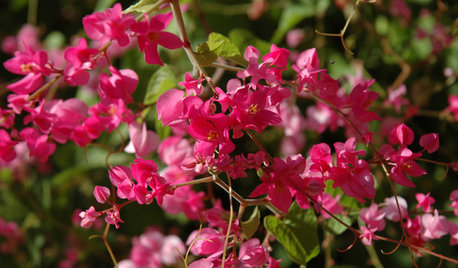
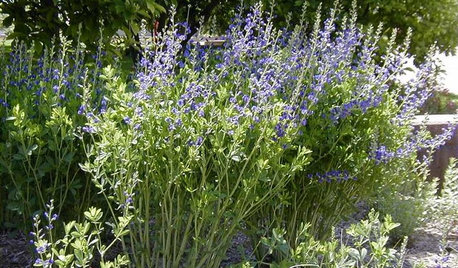
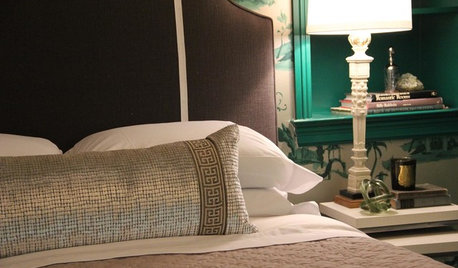

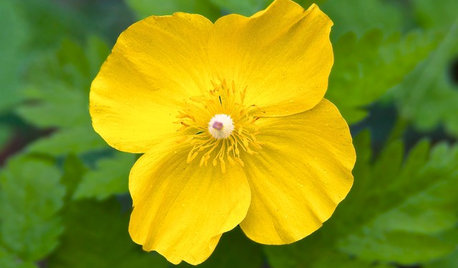







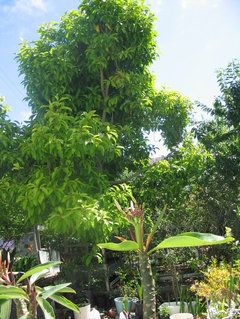

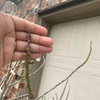
daxin